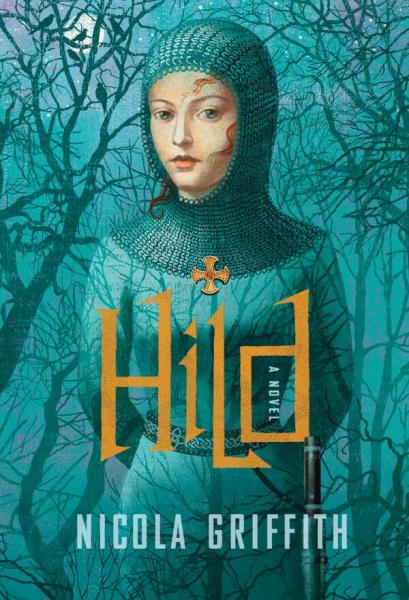Book Review: 'Hild'

Who was Saint Hilda, exactly? How did she come to be celebrated as a saint? The answer isn't clear, so Nicola Griffith wrote "Hild" to explore her own interpretation.
"Hild" is a historic novel that tells the story of Saint Hilda. Though Saint Hilda herself was a real person, very little is known about her. Griffith notes that she used this novel to explore how Saint Hilda came to be who she was. Despite the fact that Hild's mother was the widow of a murdered prince, she became the advisor to a king and was later recruited by the church.
The absence of more information gave Griffith the freedom to build Hild into the character of her choice. Perhaps the most refreshing aspect of the novel is her characterization of women—not just Hild. She avoids the pitfall of writing flat, obedient female characters, which is often the perception of medieval women, based on their social limitations.
In an interview with the Los Angeles Times, Griffith describes the challenge she faced in writing gender.
"Apart from the epic novel of character conundrum, my biggest challenge was gender. Not how it actually was, but how we're conditioned to think of how it was. Women of the past, we're told, were objects not subjects, they had no agency, they were submissive. What a load of rubbish. Women are people—as human then as you and I are today."
Hild herself is a beautifully written character, who is interested in both traditionally female and male pursuits. She willingly spends time weaving with her sister, her mother and the queen, and she persuades Cian, her half-brother, to spar with her. She desires a gemaecce, a formalized friendship between two women, and she takes an interest in reading and writing, known mostly to priests. Through Hild, Griffith reminds the reader that complex and interesting female characters do not have to fall into binaries—she embraces both "feminine" and "masculine" pastimes.
Despite this, to keep with the harsh nature of 7th century England, Hild is still limited by certain constraints. Griffith acknowledges this, and rather than transcending gender limitations entirely, she investigates how Hild might have learned about non-female activities.
Fans of George R. R. Martin's "A Song of Ice and Fire" series will enjoy Griffith's style—she describes the stark (pun intended) realities of the time period with blunt and sometimes graphic prose. Additionally, the many holes in Hild's life permit for Griffith to explore her character with more freedom. In the Author's Note, she notes that historians don't know how Hild reacted to her turbulent and rapidly changing society, and that she "wrote this book to find out." This lends a note of fantasy to a well-researched historical frame. While this isn't what is typically expected from a historical novel, it works in "Hild," and Griffith is careful to make note of the creative liberties she took, writing, "This is a novel. I made it up."
The core of this novel focuses on Hild's youth, beginning at the age of three and continuing to her marriage in her teenaged years (there is no evidence to say whether Hild married or not). Following the premature death of her father, a prince, her family seeks refuge with her cousin Edwin, a king.
Her mother's tutelage, with the mantra "quiet mouth, bright mind," has caused Hild to be incredibly observant. She uses these observations to detect patterns in the behavior of both animals and humans, and she gains the ability to use these patterns to accurately predict events to come. She becomes Edwin's seer and one of his chief advisors, and her life hinges on her ability to keep Edwin in power and to keep him happy.
Griffith provides a family tree at the beginning of the novel for the kingdoms of Deira and Bernicia, detailing which characters were real and which were created for the novel. While this is both helpful and informative for these households, many, many other characters are introduced throughout the story, and it becomes difficult to keep them all straight, especially because many of them have similar names. It would have helped for Griffith to take a leaf out of Martin's book and include an appendix of all the households and their people. However, the exquisite prose often distracts from this factor.
Though this novel does not yet delve into Hild's transition into Saint Hilda, it provides groundwork for Griffith to build on. Hild's interest in a new and bizarre religion is established, as well as what makes her extraordinary. When asked about a sequel, Griffith responded, "Oh, there's more. I'll be living in the 7th century for a while. I'm fascinated by Hild, what happens next, and how she responds."
"Hild" is fresh, rich and engrossing. The fusion of notes of fantasy with history weaves a captivating tale of who Hild might have been, and Griffith's Hild is an enchanting one.
Reach Staff Reporter Jennifer Kuan here, and follow her on Twitter here.



